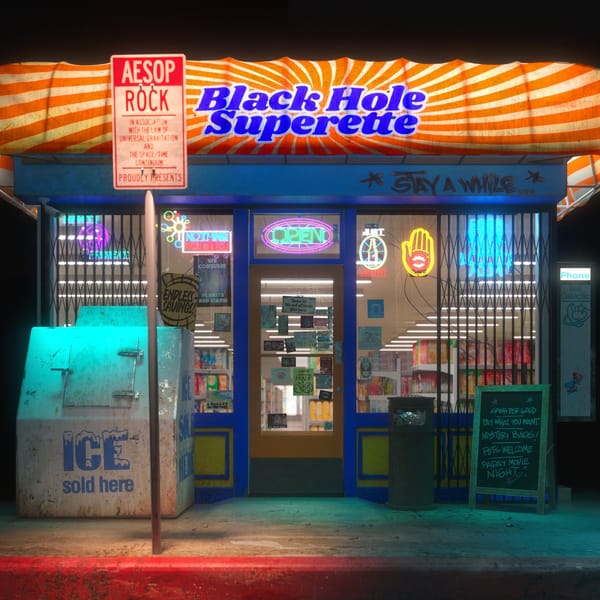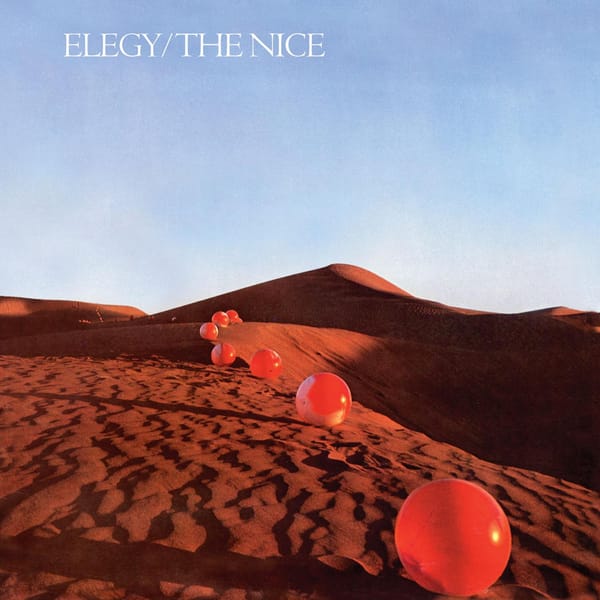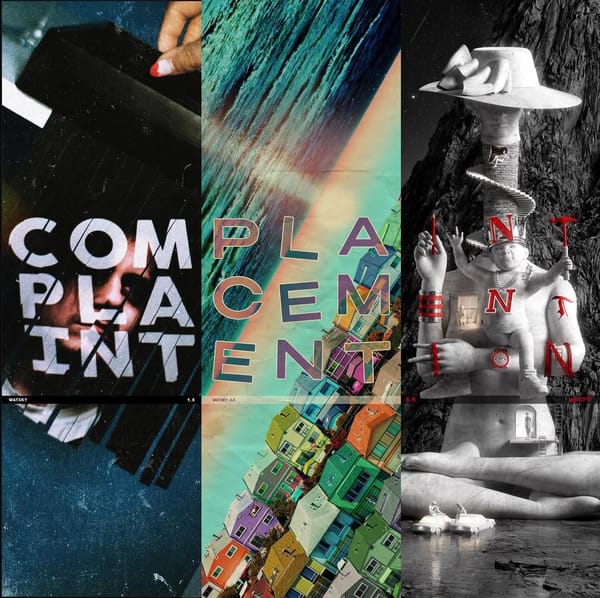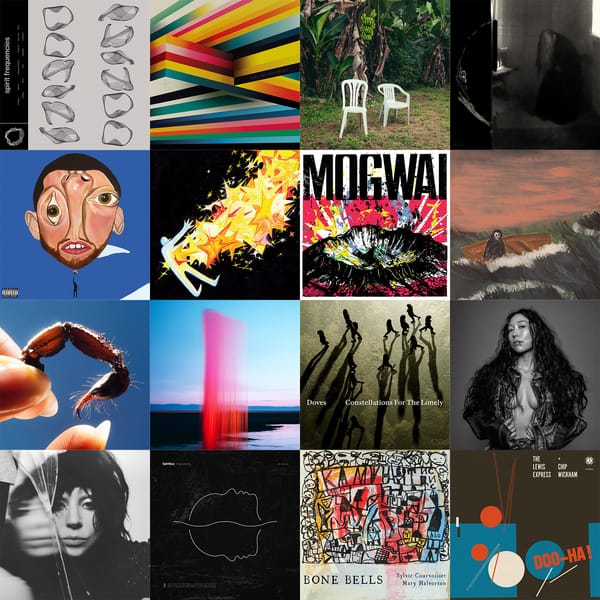Multiple Artists, La Perversita
A French collective's La Perversita album cover, an experimental album about sexual freedom
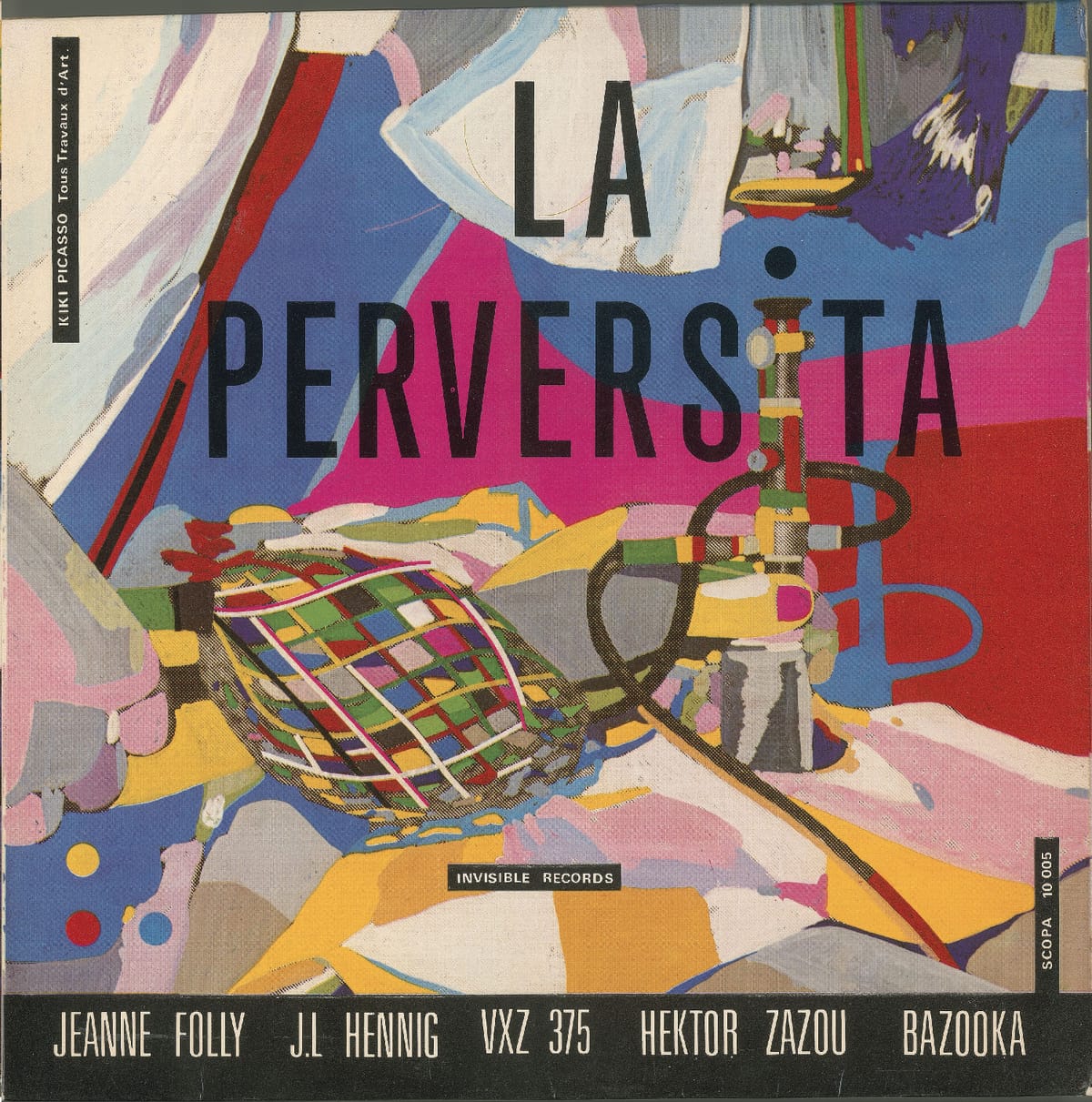
This post contains images with nude figures. Avert your eyes.
La Perversita is an eclectic and experimental minimal wave LP from a French collaboration of Hektor Zazou, Jeanne Folly, J.L Hennig, VXZ 375, and Bazooka, released in 1979, with a re-release by Sofa Records in 2022. Side A features 3 tracks, including the nearly 12 minute I Love You S..., with Side B featuring 4 tracks, with a nearly 11 minute track La Soupeuse to cap off the album.
Released in 1979, this concept record is an attempt to sublimate sexual perversion. It results from the association between Jacques Pasquier (founder of S.C.O.P.A./Invisible Records and central figure of the Parisian alternative scene during the 70s), the producer Hector Zazou, the outraging graphic design collective Bazooka and other talents from the outskirts of artistic creation - more precisely, writers and journalists associated with the emerging daily newspaper Libération.
— Sofa Records
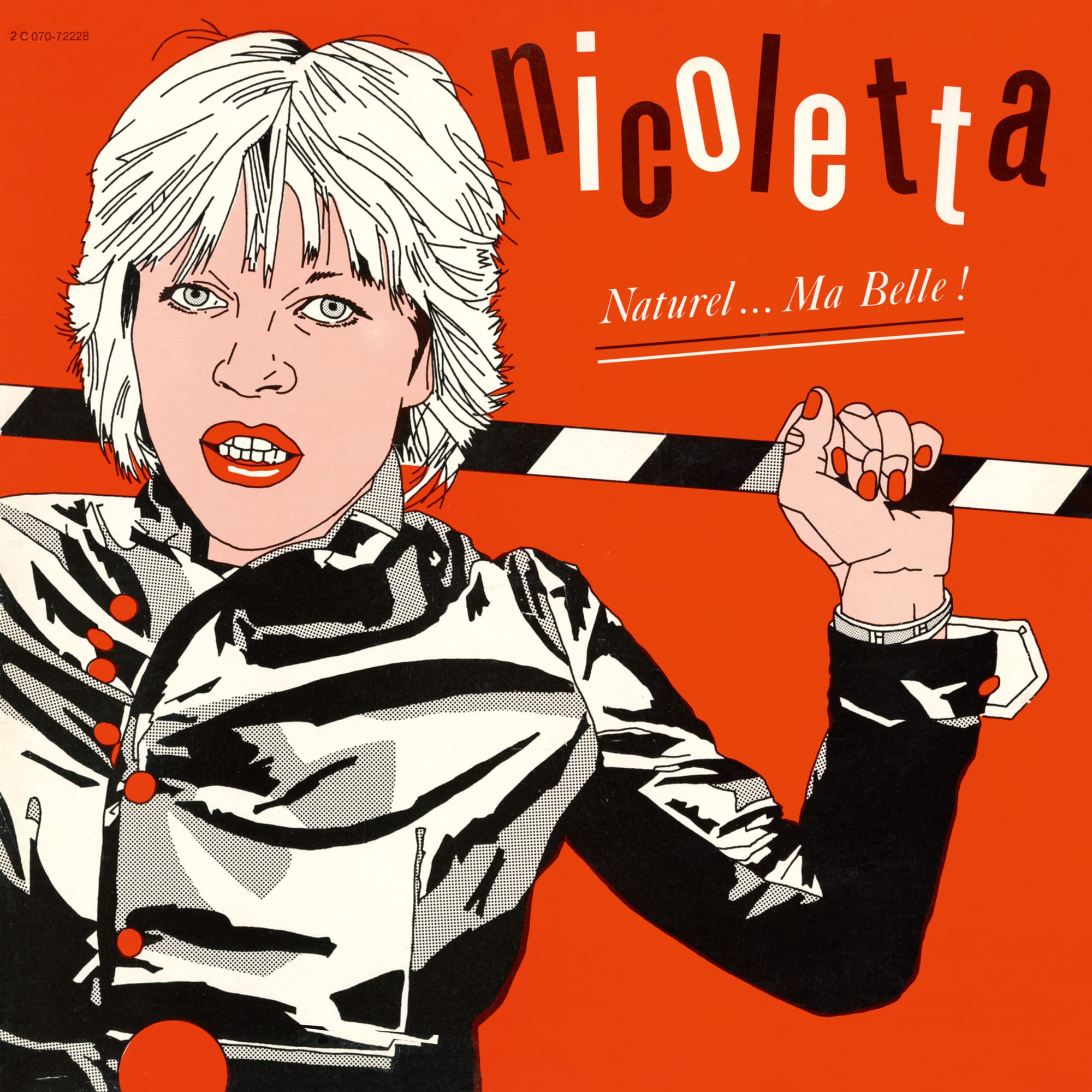
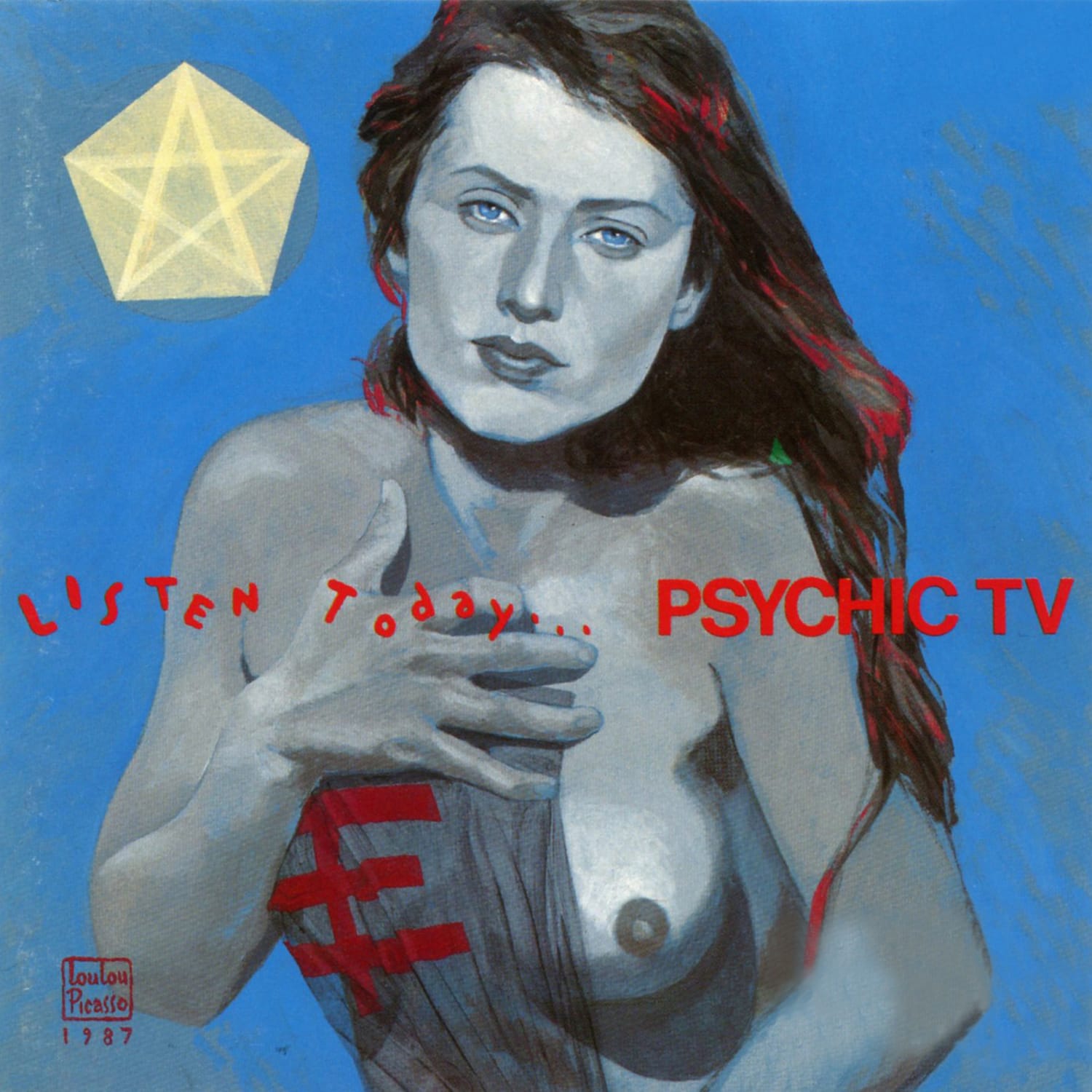
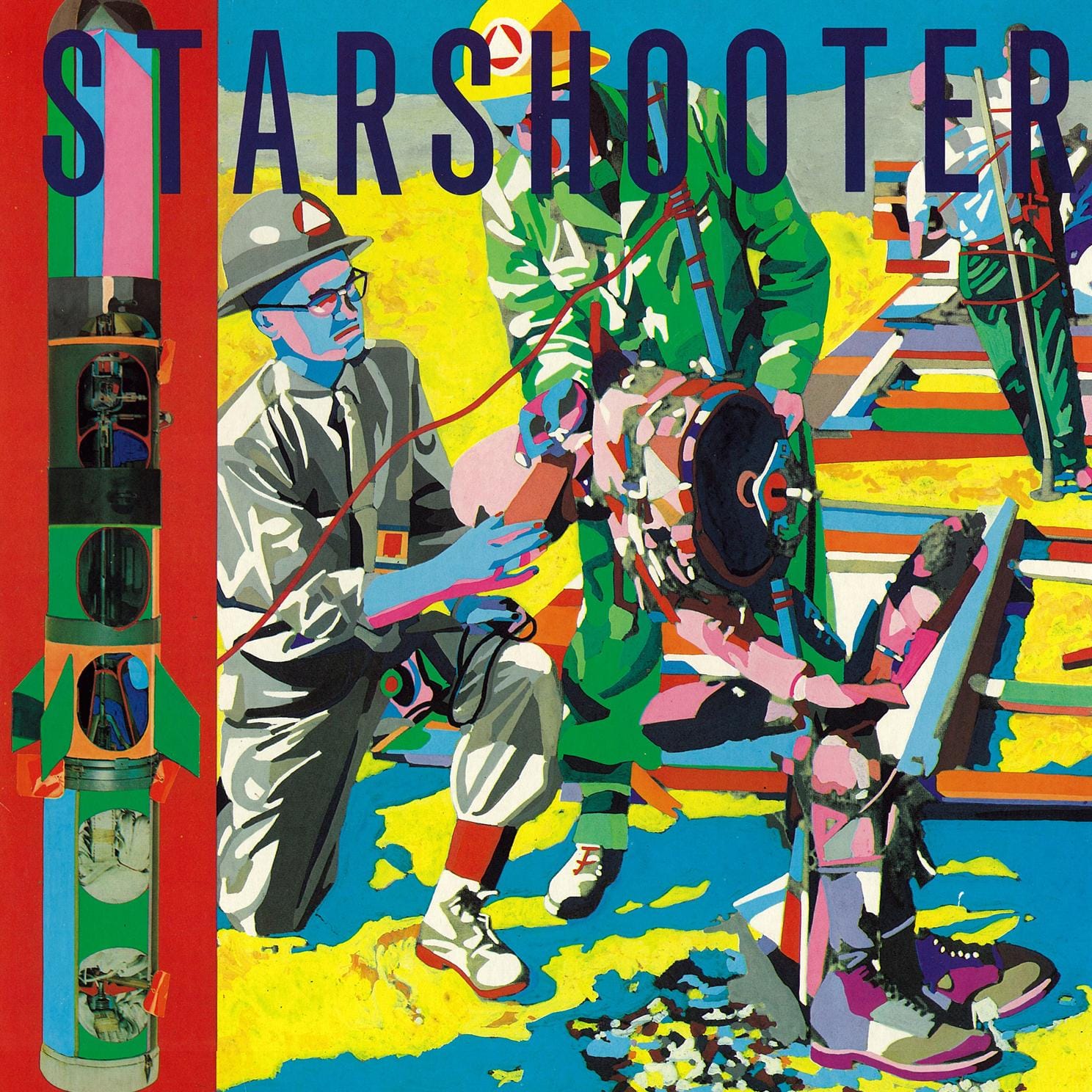
La Perversita's cover was designed by Kiki Picasso, a French artist born in 1956. He created album art for many French musicians, where you can see his skill with painting different styles.
The cover is an abstract painting with many vivid colors on a textured surface. Frankly, I'm not entirely certain what is depicted here... the easiest item to decipher is a tall machine with gauges that pipe into some latticed shape near the center. One interpretation is that it's an indoor scene, with a window in the top right, the surface possibly a bed. It could be an outdoors scene, with pink mountains below a blue sky, a landscape below with a towering machine rising up to the horizon. The album title is written in the upper third on two lines in a thin typeface, all uppercase, with the machine forming the stroke of the "i". On the bottom is a strip that lists the contributing parties, and "Invisible Records" is in a small rectangle above it.
The album is of course about love and sexual perversion, though I wouldn't say the music is particularly sexy, with eclectic, minimal and sometimes spooky vibes. I'm no longer that good at French, so it's difficult for me to comment on the lyrics, which often overlap with numerous speakers.
Despite not really understanding, I love the color and abstraction from this cover. The one item that is readable as a mechanical instrument almost creates more questions than it answers. And how does it all relate to the themes of the music and poetry, sexual freedom and counterculture?
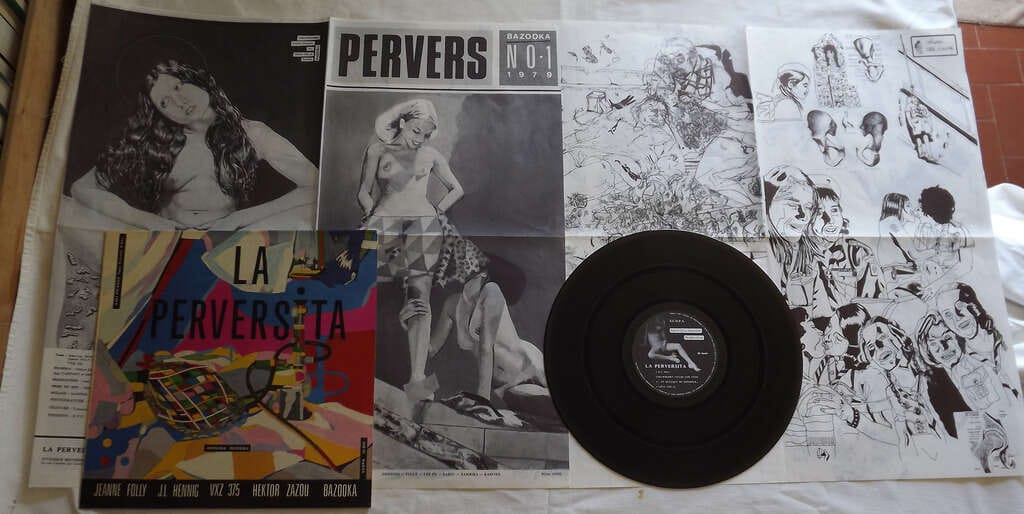
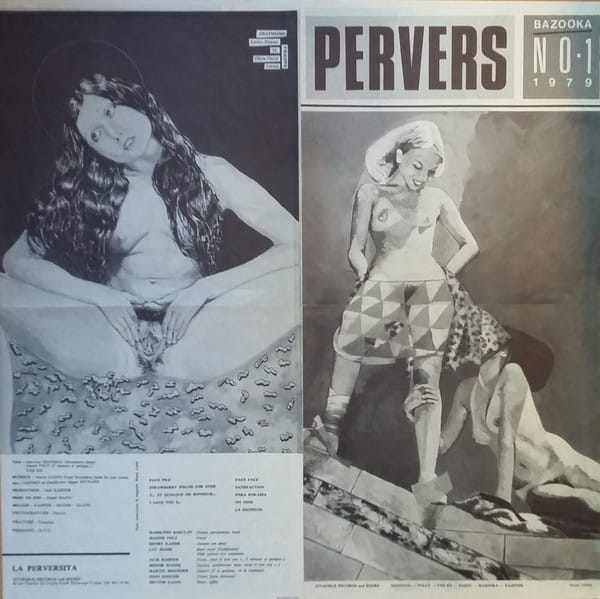
Included in both the original and re-release is a zine by graphic design collective Bazooka, featuring nude figure drawings, mostly of women. It's difficult to find a proper photograph or scan of this. As mentioned above, the drawings are largely female figures, which naturally opens the discussion of whether it's trying to speak for feminism and feminine sexuality, or just another piece for the enjoyment horny viewers.
Contextually, the album released in the late 70s in France, which was generally more sex-positive and open than other countries, and an indecent exposure law that had greater penalties for homosexuality was repealed in 1980, the last big law punishing homosexuals. Same-sex marriage wasn't recognized until 2013, but that was still fairly early compared to many other countries.
Ideally, it's a celebration of human, woman's and lesbian's sexuality. It's just difficult to avoid being cynical about this sort of thing with modern eyes. I believe there weren't further editions of the Bazooka zine in this capacity. They created some other experimental works and collaborated with the newspaper Libération, having a fairly central role until their dissolution in 1979 after they spawned a lot of controversy for a drawing of child pornography in the June 1978 issue of Libération.
But, Bazooka were punks, provocateurs, and graphical terrorists. Whether they created it for sexual enjoyment, sexual celebration, shock value or something else, it's an interesting package to interpret. Between the eclectic music and poetry, bright and abstract cover and provocative and sexual insert, there's a lot happening and I don't understand most of it. But Picasso's colorful drawing drew my attention 50 years later and gave me a chance to hear their message and learn something new.
Warne, Chris. “Graphical Terrorism? Bazooka, Punk and Leftist Politics at ‘Libération’ Newspaper in 1970s France.” History Workshop Journal, no. 76, 2013, pp. 212–34. JSTOR, http://www.jstor.org/stable/43298738. Accessed 14 May 2025.

